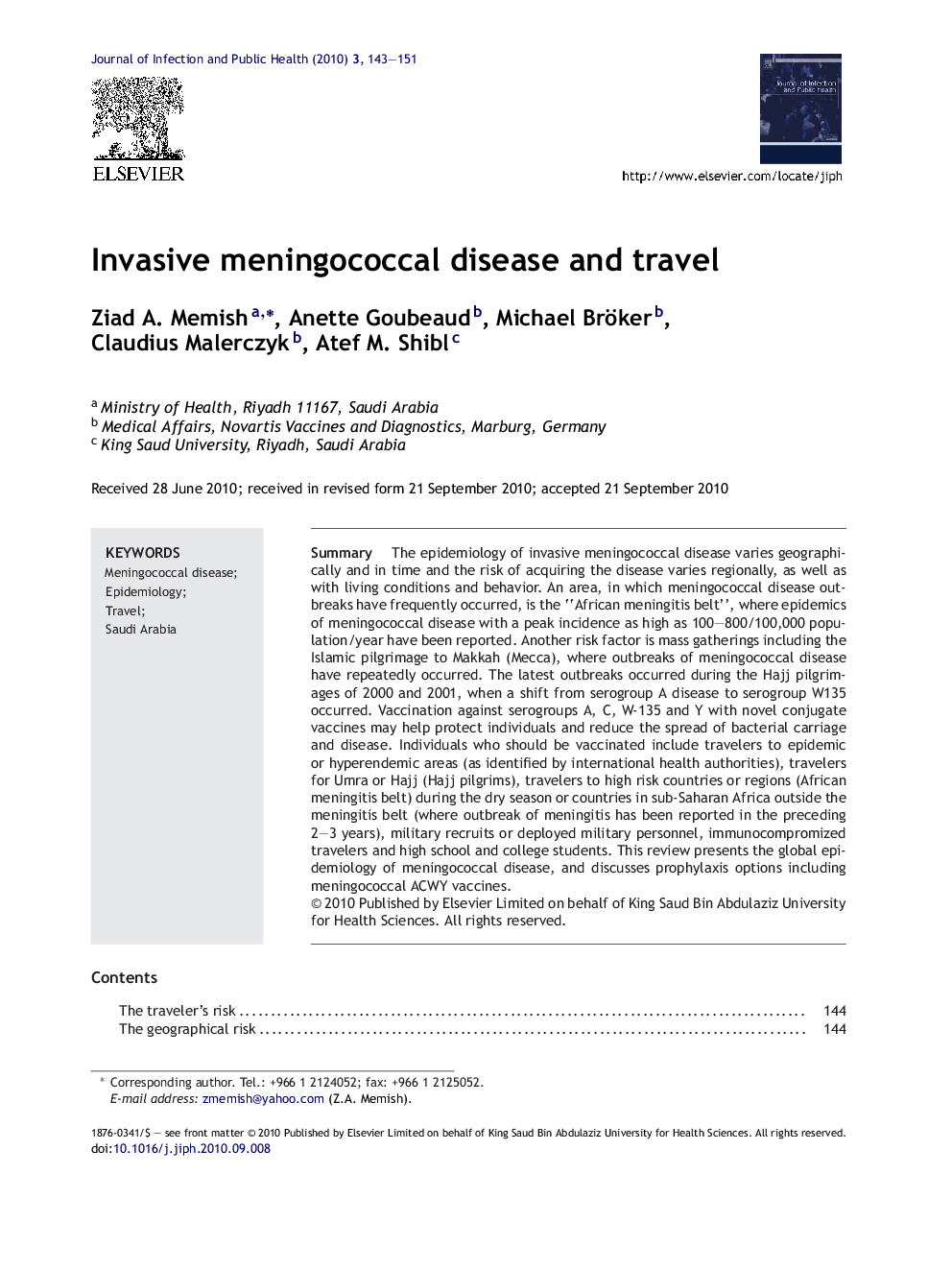| Article ID | Journal | Published Year | Pages | File Type |
|---|---|---|---|---|
| 3406236 | Journal of Infection and Public Health | 2010 | 9 Pages |
SummaryThe epidemiology of invasive meningococcal disease varies geographically and in time and the risk of acquiring the disease varies regionally, as well as with living conditions and behavior. An area, in which meningococcal disease outbreaks have frequently occurred, is the “African meningitis belt”, where epidemics of meningococcal disease with a peak incidence as high as 100–800/100,000 population/year have been reported. Another risk factor is mass gatherings including the Islamic pilgrimage to Makkah (Mecca), where outbreaks of meningococcal disease have repeatedly occurred. The latest outbreaks occurred during the Hajj pilgrimages of 2000 and 2001, when a shift from serogroup A disease to serogroup W135 occurred. Vaccination against serogroups A, C, W-135 and Y with novel conjugate vaccines may help protect individuals and reduce the spread of bacterial carriage and disease. Individuals who should be vaccinated include travelers to epidemic or hyperendemic areas (as identified by international health authorities), travelers for Umra or Hajj (Hajj pilgrims), travelers to high risk countries or regions (African meningitis belt) during the dry season or countries in sub-Saharan Africa outside the meningitis belt (where outbreak of meningitis has been reported in the preceding 2–3 years), military recruits or deployed military personnel, immunocompromized travelers and high school and college students. This review presents the global epidemiology of meningococcal disease, and discusses prophylaxis options including meningococcal ACWY vaccines.
